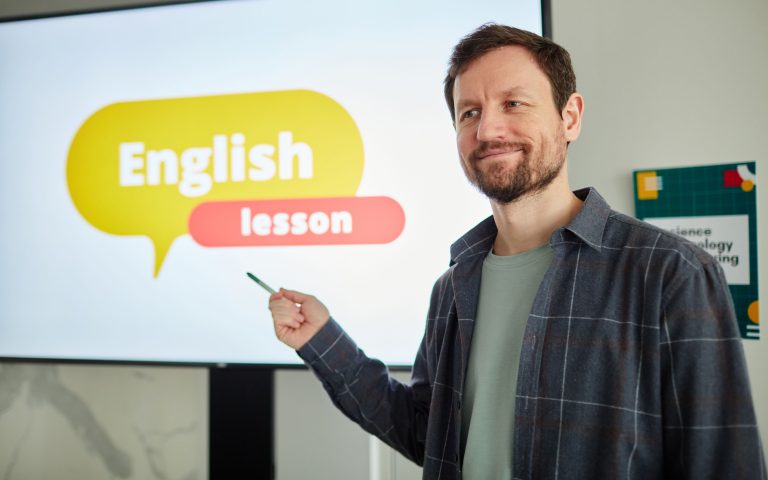From small to medium-sized teams, remote teams, communication tools and apps, multicultural organisations, and time zone differences, the workplace is continuously evolving. One essential aspect that weaves through the evolution and impacts an individual’s, team’s, and organisation’s success is communication. No matter who you are, where you are based, what you do, or even dream of doing, improving your communication skills is a vital skill that everyone needs to develop. Let’s find out why so much value is placed on communication and what practical steps you can take to refine your skills.
What is communication?
Communication is described as the relaying and receiving of information between the sender and receiver using a variety of verbal and non-verbal means. Communication is more than talking and listening. Non-verbal elements like body language, tone, and facial expressions, to name a few, feed into the communication cycle.
Types of communication
Communication is categorised into four main groups. We look at each of these below.
- Written communication
Written communication is a traditional element of communication. From writing and posting letters to friends when we were younger, to now texting, sending emails or messages in communication tools, to more formal written communication like reports, documents, and white papers.
With written communication, you need to ensure that your message is relayed concisely, clearly, accurately and in the correct tone for the receiver and platform used.
- Verbal communication
Verbal communication can be formal, from giving presentations to delivering reports, or informal communication like chatting at the water cooler or talking with friends and family about weekend plans. This type of communication also includes active listening to ensure you’re not just hearing the words being spoken but are paying attention to what is being said (and not).
- Non-verbal communication
An aspect of communication that often gets little attention but is equally important is non-verbal communication. This type of communication is through body language and includes your posture, eye contact, facial expressions, and demeanour. Someone speaking with a scowl on their face and arms folded saying they “are fine” sends a confusing message to the receiver. Non-verbal communication needs to be in sync with verbal communication to ensure the message is conveyed clearly.
- Visual communication
Visual communication is a type of communication that uses graphics, charts, images, and other styles of non-written means to send a message. For example, almost everyone can recognise roadmaps, mind maps, process diagrams, and graphs. Like all types of communication, visual communication needs to be clear to make sure your message is well communicated.
The good news is that you can hone your communication skills and become a well-rounded communicator. Here are a few practical tips on how to develop this trait.
Tips to improve your communication skills
- Practice active listening
A popular author, Stephen R. Covey, states that “Most people do not listen with the intent to understand; they listen with the intent to reply.” We hear the sounds and voices or even scan the contents of an email for keywords and want to respond or say our piece as soon as there’s a break in the conversation, but don’t fully engage in what is being said or the full written message. But listening is crucial in communication so that the message isn’t misconstrued, or we respond to something that isn’t important.
- Maintain open body language
- Give your full undivided attention
- Remove all distractions
- Paraphrase what you heard before replying
- Ask open-ended questions for more information
- Understand non-verbal communication
At times, non-verbal communication says as much (if not more) than verbal communication. It says what your words don’t and can be more impactful than what is spoken. Whatever setting you find yourself in, you need to become adept at picking up non-verbal cues, while being cognizant of the cues you are also communicating. What you’re communicating needs to align with your verbal cues so that wires aren’t crossed. If you hone this skill, you can change the track of the communication to get the desired result.
- Be emotionally aware
Emotional intelligence plays a big role in communication because it can help you assess your own feeling and give you a better understanding of others. When you’re aware of your emotions and what triggers you, you can manage the emotions, be an active listener, use appropriate tones, and be able to empathise with others. Working on improving your emotional IQ can help you have better communication with others.
- Prepare
“If you fail to prepare, you prepare to fail.” Preparation can play a critical role in the effectiveness of communication because what you say is as important as how you’re going to say it. In preparing, you’re taking into consideration what information you need to relay to give weight to your message, it helps you establish the core message of what you need to say and get your backup ready for potential questions and critiques that may come.
- Know your audience
Before starting any communication, you need to know who you are communicating with. This will help you personalise your communication and affect the style, form, and mode used. Knowing your audience helps you consider what your receiver needs to know and will help you decide what the best way to present the information to them will be.
- Be concise
Whether it’s verbal or written, your communication needs to be clear and concise. This helps you avoid unnecessary information and details, and flowery language that doesn’t add to the message but instead distracts from the message. In some instances, repetition is necessary, but you need to outline what message you want to communicate so that it’s received well and fully. Use the BRIEF (background, reason, information, end, follow-up) acronym to help you achieve this in your communication.
- Enrol in communication courses
There are many courses you can register for to help improve your communication skills. The English Vertical is one example for many reasons. Here, basic English means being able to communicate on a simple level so that you can make yourself understood. The course is designed to help take your English language skills from beginner to advanced level while teaching you the essentials of how to communicate, learn how to communicate with different audiences, and structure your sentences for clarity and conciseness.
Communication is a lifelong process that will take time, dedication, and practice to master. There is always something to learn but with time, the process will certainly become easier and ultimately improve personal and professional relations. Investing in improving your communication skill is an investment that will reap you great rewards.








